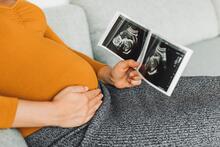Birth Defect Prevention and Surveillance Program
A birth defect may affect how a baby’s body looks, works, or both and is present at birth. Nationally, around 1 out of every 33 babies are born with a birth defect.
Birth defects are one of the leading causes of death in children less than one year of age–causing one in every five deaths. The impact of a birth defect on a person’s life can range from mild to severe.
The Birth Defect Prevention and Surveillance Program at the Wisconsin Department of Health was established under Wis. Stat. 253.12 in 2000. The Department of Health Services (DHS) operates a statewide, passive surveillance system that collects information on selected birth defects diagnosed before the second year of life. Nearly 2,000 babies are born in Wisconsin each year with a birth defect. This results in roughly 80 deaths per year. There are around $386 million annually in birth defect-associated hospitalization costs.
Information on birth defects
Wisconsin Stat. § 253.12 defines a birth defect as a structural deformation, disruption, or dysplasia or a genetic, inherited, or biochemical disease. They may affect how the body looks, works, or both.
Birth defects can vary from mild to severe. The well-being of each child affected with a birth defect depends mostly on which organ or body part is involved and how much it is affected.
Depending on the severity of the defect, what body part is affected, and options for treatment exist, the expected lifespan of a person with a birth defect may or may not be affected.
Birth defects can occur during any stage of pregnancy. Most birth defects occur in the first three months of pregnancy, when the organs of the baby are forming. However, some birth defects occur later in pregnancy. For most birth defects, we don’t know what causes them. It is thought that they are caused by a complex mix of factors. Those factors include our genes, our behaviors, and things in the environment.
Through birth defect research, we have learned about some things that may increase the chances of having a baby with a birth defect, such as:
- Smoking, drinking alcohol, or taking certain drugs during pregnancy.
- Having certain medical conditions
- Having someone in your family with a birth defect
- Age of the mother
Having one or more of these risks doesn’t mean you’ll have a pregnancy affected by a birth defect. A baby can be born with a birth defect even when none of these risks pertain. It is important to talk to your doctor about what you can do to lower your risk.
While we do not know what causes all birth defects, we do know that there are things that can decrease the chances of birth defects.
- Take 400 micrograms (mcg) of folic acid every day at least one month prior to getting pregnant.
- Get up to date on vaccinations and prevent infections.
- Plan a visit with your health care provider to discuss your overall health and talk about medications you take.
- Avoid harmful substances, such as alcohol, tobacco, and other drugs.
- Care for your whole self through exercise, a healthy diet, and mental health care.
- If you, your partner, or someone in your families has a birth defect, you may want to see a genetic counselor.
People who want to learn more about their risk of having a baby with a birth defect and ways to prevent birth defects can talk with a genetics counselor or their health care provider.
Birth Defect Prevention
We do not know the cause of most birth defects, but there are steps that can be taken before and during pregnancy to help reduce the chances of the baby having a birth defect.
Wisconsin Birth Defects Registry (WBDR)
To better understand birth defects, Wisconsin collects specific information on children under the age of two who were born with birth defects.
Related resources
Family Voices supports families in theory own leadership and advocacy journey.
The Children’s Resource Centers are devoted to supporting families with children and youth (ages 0-22) with special health care needs (CYSHCN) and the providers who serve them.
The Board for People with Developmental Disabilities works to further the prevention and early detection of developmental disabilities.
The National Birth Defects Prevention Network is a national network of state and population-based birth defects programs addressing issues of birth defects surveillance, research, and prevention.
Visit MotherToBaby for trusted, evidence-based information on the benefit or risk of medications and exposures during pregnancy and while breastfeeding.
Get information from the CDC (Centers for Disease Control and Prevention) on birth defects.
View data from birth certificates and hospitalization discharges on a few birth defects in Wisconsin on the Environmental Public Health Tracking site. You can also read a surveillance brief, P-00840 (PDF) on some birth defects.
Learn about the Wisconsin Council on Birth Defects Prevention and Surveillance.



